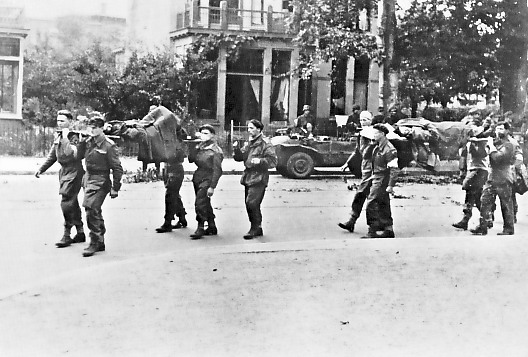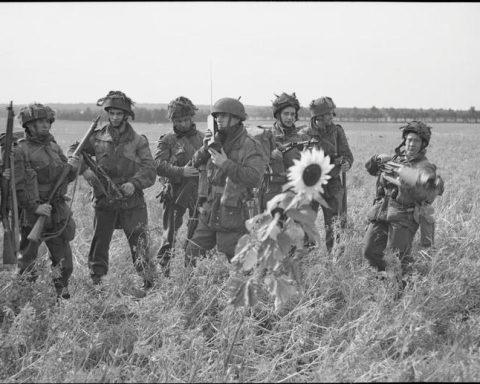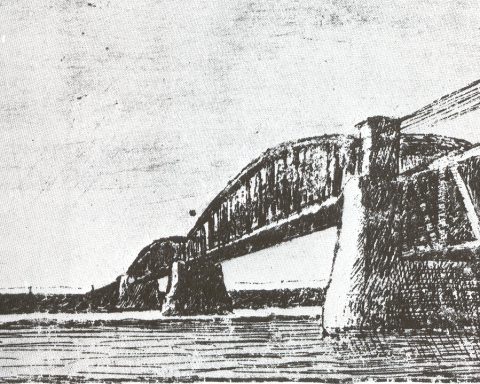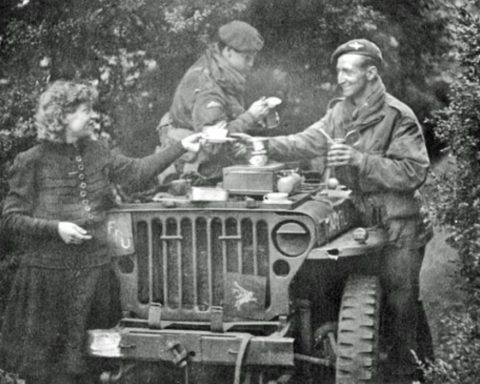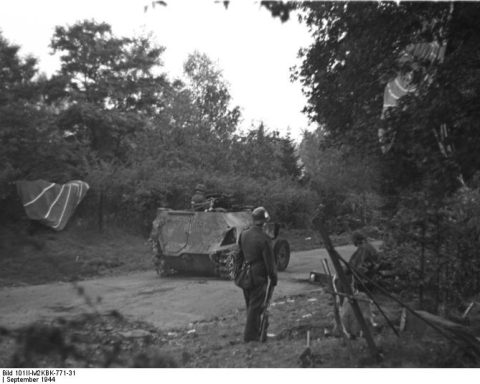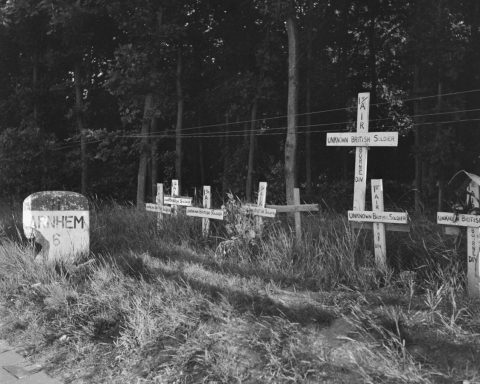The British also held out in Oosterbeek on Sunday, September 24. But the price the British paid for this was unprecedentedly high. As a result of the fighting and mortar shelling, approximately 200 British soldiers were killed every day and an estimated 400 soldiers were injured.
The wounded could go to the nine emergency hospitals that the British had set up on the perimeter in Oosterbeek. Hotel Schoonoord on the Utrechtseweg was the most important medical facility that the British had.
As a result of the fighting, Schoonoord had ended up on the German side of the front line earlier that week. The Germans stationed a few soldiers at the entrance, but allowed the British doctors in Schoonoord to do their work. Moreover, there were not only British wounded in Schoonoord, but a large number of German wounded were also treated.
The dressing stations were overcrowded. Most of the injured were therefore treated at home out of necessity.
Colonel Graeme Warrack, who headed the medical department in Oosterbeek, concluded on Sunday morning, September 24, that things could no longer continue like this. It is estimated that there were approximately 1,500 wounded within the British line, many of whom were in serious condition.
After a week of fighting, there was also a serious lack of medical supplies within the British perimeter. From bandages to morphine: there was a shortage of everything.
That morning, Red Cross flag
Warrack asked General Urquhart in the Hartenstein hotel if he could agree a ceasefire with the Germans to remove the wounded. Coincidentally, the head of the German medical corps, Major Egon Skalka of the 9th SS Armored Division, had also concluded that morning that something had to be done with the wounded in Oosterbeek.
The German army doctor Skalka therefore drove a captured British jeep along the Utrechtseweg in Oosterbeek to Schoonoord to discuss with the British doctors what they could do. To prevent British soldiers from shooting at him, Major Skalka had placed a British prisoner of war on the hood of the jeep waving a large red cross flag.
Inside Schoonoord, Major Skalka met his British counterpart Colonel Warrack. The two doctors quickly determined that as many injured people as possible should be transported to the Elisabeth Gasthuis in Arnhem.
Brandy
Together the two doctors drove in Skalka’s jeep to the headquarters of German General Bittrich in Apeldoorn. Skalka and Warrack were accompanied by the Dutch doctor Van Maanen who had been working at the Schoonoord hotel all week.
Bittrich immediately gave Warrack and Skalka permission for a ceasefire. A two-hour ceasefire would come into effect at 3 p.m. on Sunday, September 24. Some of the wounded would be removed within those two hours. The Germans promised that they would provide transportation.
When he left, General Bittrich gave Colonel Warrack a bottle of brandy: “For your general.”
That evening, after the ceasefire had ended, General Bittrich had confessed to Field Marshal Walter Model that there had been an armistice in Oosterbeek that afternoon. Model could not imagine that Bittrich had agreed to a ceasefire. “What the hell were you thinking?”
Ceasefire
Now that General Bittrich had given permission, Major Skalka then drove with Warrack back to Oosterbeek via a small detour. The German doctor first drove past the Elisabeth Gasthuis. There he ordered Warrack and Van Maanen to take as much morphine and other relief supplies as they could carry.
Warrack visited his colleague Alexander Lipmann-Kessel in the hospital, who had marched with John Frost’s battalion after the airborne landings on September 17. Lipmann-Kessel had stayed behind in the Elisabeth Gasthuis to care for the British wounded.
Warrack told Lipmann-Kessel that hundreds of wounded people from the British sector in Oosterbeek would arrive at the Elisabeth Gasthuis later that afternoon. Lipmann-Kessel was appalled when he heard about the hopeless battle the British were waging in Oosterbeek. He had been so busy operating all week that he hadn’t wondered how the battle was actually going.
That afternoon at 3 p.m. a ceasefire indeed came into effect. The armistice was respected by both sides. The Germans also kept their agreement and had sent all ambulances, jeeps and other cars suitable for transporting wounded people to the British lines.
Yet there were too few cars to transport all the wounded. Wounded people who were able to walk were therefore sent on foot to the Elisabeth Gasthuis. The injured people who were taken away by car were taken to a hospital in Apeldoorn. A total of 450 injured people were transported from Oosterbeek. The Germans showed themselves from their best side.
War crime
However, the image of the courteous Germans was completely destroyed by a war crime that took place later that day on the sidewalk in front of the Elisabeth Gasthuis.
Captain Brian Brownscombe, a doctor from the South Staffords, was standing outside the Elisabeth Gasthuis taking a rest in the late afternoon of September 24. An SS soldier who was passing by at that moment shot the British doctor dead without any provocation.
After the war, the SS man is tracked down. It turned out to be Karl-Gustav Lerch, who worked as a war correspondent for the SS. He first defended himself by saying that an SS officer had given him the order. He later said he was drunk. The SS man received the death penalty.

